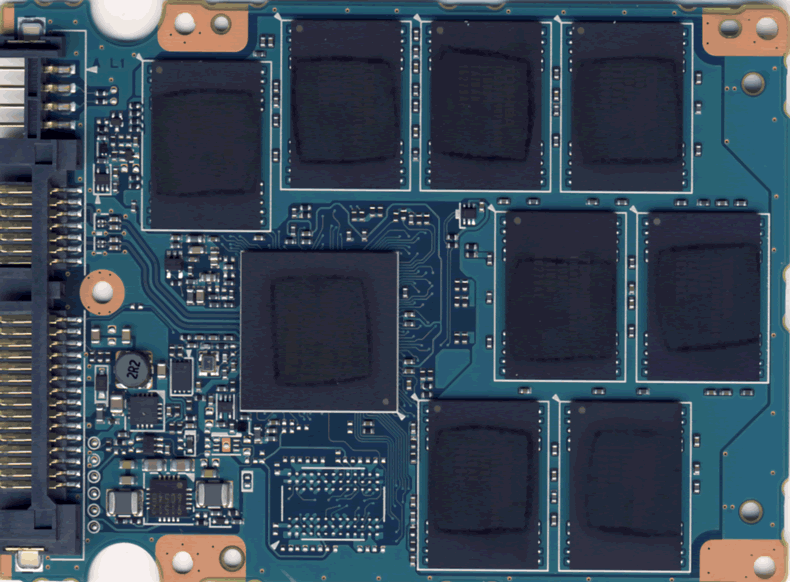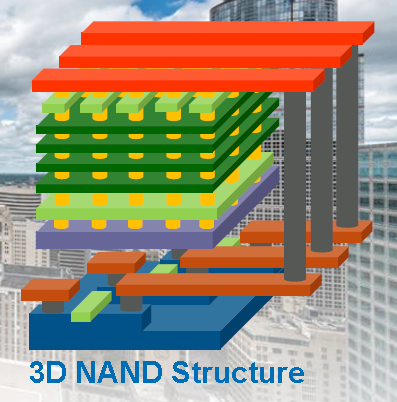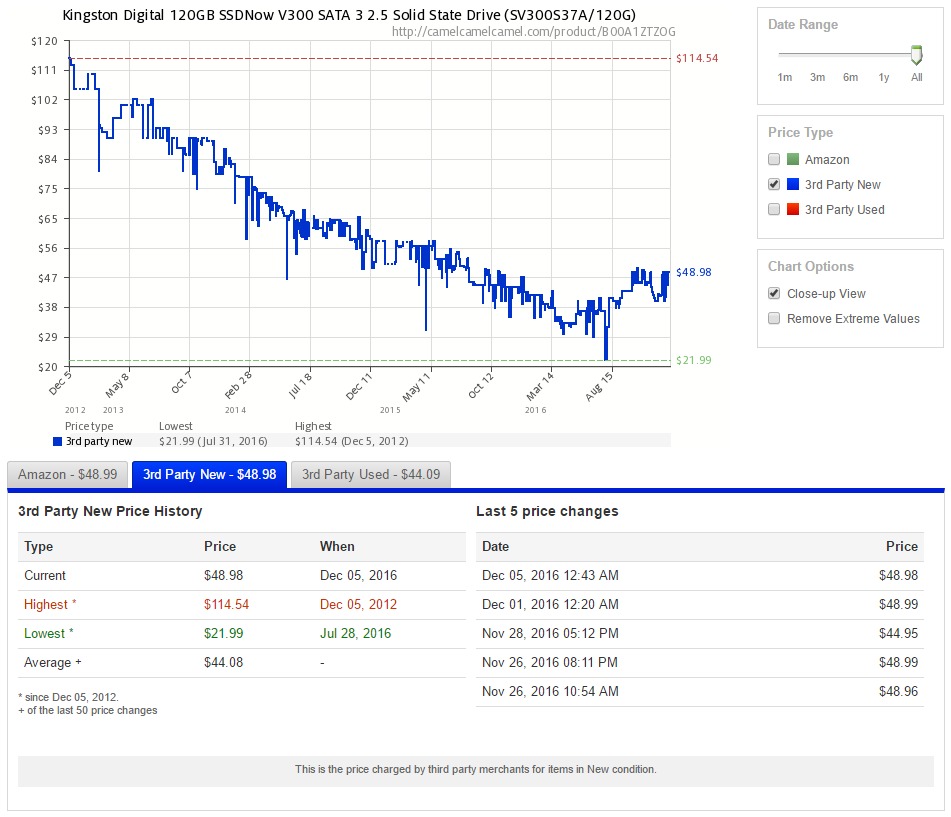SSD a little expensive due to the lack of flash memory

In the past few years, prices for solid-state drives have steadily declined due to a fall in the cost of flash memory (NAND). This was due to the overproduction of planar flash memory (2D NAND) by many companies using an old well-established process technology.
The smooth and steady decline in prices for SSD-drives was slightly broken in the III quarter. 2016 In the coming weeks, the increase in NAND value is expected to affect the value of the final product. New batches of SSD-drives will come at new, increased prices.
According to the latest report of DRAMeXchange, a division of TrendForce, the cost of flash memory increased in the III quarter. 2016 Analysts explain this decline in production, which is associated with the transition to a more complex in the production of "vertical" flash memory 3D NAND. In it, the transistors are packed in a multilayer structure, as a result of which the information density per unit area increases, wear decreases and operation speed increases.
')
The production of 3D NAND is much more complicated than the production of planar flash memory. For example, the 3D V-NAND 3D cell from Samsung is a cylinder, the outer layer of which is the control gate and the inner layer is an insulator. The cells are located one above the other and form a stack, inside which a cylindrical channel of polycrystalline silicon, common to all cells, passes. The number of cells in the stack is equivalent to the number of layers of flash memory.

The first to manufacture 3D NAND was Samsung. In 2013, she announced the release of the first three-dimensional chips of the MLC type, numbering 24 layers, and a year later the 3D implementation received a TLC flash memory with 32 layers. The rest followed. Toshiba and SanDisk have united in an alliance for the release of flash memory BiCS 3D NAND (Bit Cost Scalable). The Micron / Intel Alliance also developed its own three-dimensional flash memory and began production this year.
Just at the end of 2016, the moment came when manufacturers began to actively master the mass production of new-type flash memory. It is not surprising that this technological transition was not without problems.
Price Forecast
According to the DRAMeXchange forecast, the average contract prices for MLC NAND memory drives will increase by 6-10% in the near future, while TLC-type drives will increase by 6-9%. Three bits of information are stored in one TLC cell, and two bits are stored in one MLC cell. For this reason, drives on TLC NAND memory are usually cheaper than MLC NAND with the same capacity, but they withstand fewer write / erase cycles and have a noticeably lower write speed. It should be noted that 20,000 write / erase cycles are declared in the three-dimensional Samsung TLC memory, that is, there is no TLC NAND problem there.
Hints on the rise in price of solid-state drives have become noticeable in the second half of 2016, and analysts predict a further continuation of this trend.
For example, let's look at the price change for popular models of SSD-drives on Amazon. The cost of the drive Crucial MX300 525GB slightly increased in July and practically did not decrease since that time, but reached a maximum at the end of November.

The cost of an older, but still quite popular, 120GB Kingston V300 model has been continuously falling for several years, but the process stopped around mid-2016 - and the cost started to rise slightly.

The cost of storage is subject to seasonal fluctuations. It traditionally falls slightly, responding to the increase in demand before the holidays, and then slightly increases. But at the end of this year and the beginning of next year, prices will be additionally influenced by an obvious NAND deficit in the market, so the cost of solid-state drives will increase by at least a few percent.
Deficiency
The current shortage of flash memory does not go to any comparison with the jump in prices for HDD in the fall of 2011 , when due to flooding in Thailand, the factories for the production of hard drives and components for them temporarily failed, and the prices for HDD temporarily jumped twice . We can also recall the powerful shortage of RAM in 1999, when after an earthquake on August 19 in Taiwan almost all the factories producing memory chips failed. In a few weeks, the memory disappeared from the market. The cost of the 32MB running DIMM module has risen from $ 28 to $ 85.
Now there were no natural disasters. A short-term “shortage” of goods in the market is a natural phenomenon that occurs after a long period of price reduction. Then the prices are slightly adjusted - and the market finds equilibrium.
DRAMeXchange analysts warn of a tacit consensus (“cartel collusion”) between the largest manufacturers of flash memory in order to maximize their profits. This “consensus” will also push prices upward in the near future, until 3D NAND’s production technology masters a sufficiently large number of companies - and there will not again be oversupply in the market that exceeds demand. From the current temporary price increase, the maximum profit will be received by Samsung.
Demand for solid-state drives is growing rather steadily, despite price increases. The price difference between SSD and HDD has reached a minimum level.

Analysts predict that by the end of 2017, 30% of all computers sold (desktops and laptops) will be equipped with SSD drives, and next year there will be 50%.
Source: https://habr.com/ru/post/372949/
All Articles